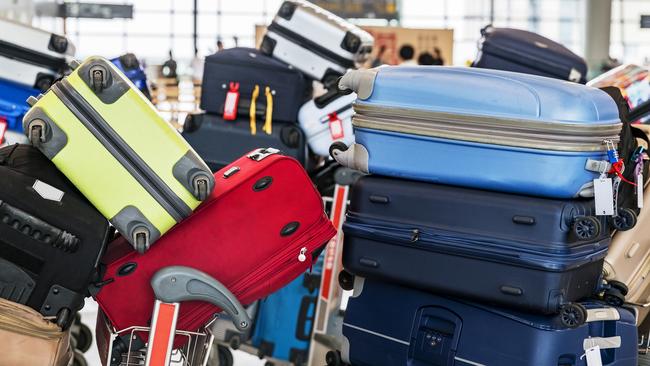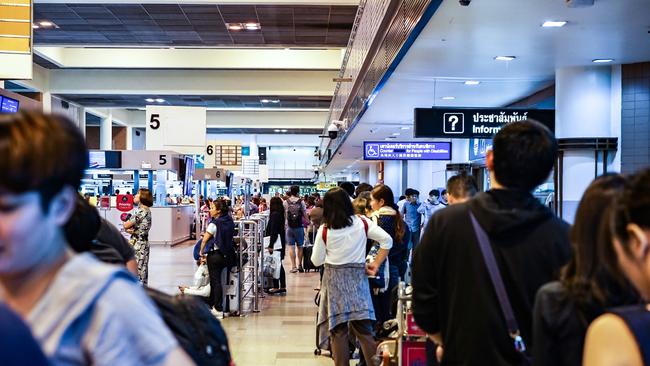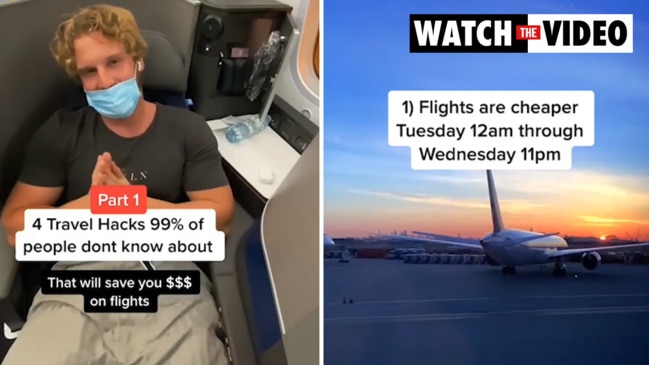Don’t expect cheap airfares to come back soon, airline executives say
Travel demand has surged, but flight supply hasn’t kept up, leading to higher airfares — and revenues — for airlines. Here, executives reveal why it’s taking so long to level out.

Airfares are sky high, and airline executives expect them to stay that way. Airlines are battling surging costs for fuel and labour. Meanwhile, worker shortages and delayed plane deliveries are preventing them from adding more flights when more people want to fly.
The consumer-price index for airfare was up 43% in September from a year earlier, according to the U.S. Labor Department. Ticket prices were still depressed last year, but airfares in the CPI were up 8% from September 2019, according to Airlines for America, a trade group.
Airlines stabilised their operations after a rocky start to summer that was marred by cancellations, delays and lost baggage. But they did it by cutting back on the number of flights they offered, and executives say the industry’s growth will be hemmed in for the foreseeable future.
Andrew Watterson, Southwest Airlines Co.’s chief operating officer, said, “It’s unusual. You have demand quickly outstripping supply like this.” “I think we have a couple of years where demand and supply may not be as aligned as it was prepandemic,” he said.
For airlines, that is proving to be a blessing in part, leading to higher fares that have helped cover a roughly 80% increase in jet fuel prices and revenues over the summer that beat those in 2019.
Prices have moderated somewhat in recent months, but industry experts and airline executives say they aren’t anticipating low fares anytime soon. Flights departing in March 2023 are averaging $US350 ($AUD540) a domestic round-trip ticket — 26% higher than at this time last year and 28% above 2019, though that could change if bookings don’t come through, according to Hopper, a booking app.

In Europe, prices are also climbing, with discount carrier Ryanair Holdings PLC, Europe’s biggest airline by passenger numbers, reporting a 14% rise in ticket prices across its short-haul network over the summer compared with 2019.
“There has been a structural change in capacity in Europe over the last two years,” Ryanair Chief Financial Officer Neil Sorahan said in an interview. “The days of the kind of 9.99 euro ($9.98) fares are probably gone.” Higher fares haven’t yet deterred customers, but rising prices for food, energy and other goods could chip away at the savings people are using for travel, leaving them strapped for cash, said Kevin Healy, president and chief executive of Campbell-Hill Aviation Group, a consulting firm.
“The only thing pushing in the other direction is inflation. That hasn’t seemed to have as big an impact yet,” he said.
There could be some relief as airlines restore capacity, albeit more slowly than they had originally planned. Delta Air Lines Inc. plans to rebuild its full network by next summer, and CEO Ed Bastian has said the additional supply could help ease some pricing pressure.
As the travel chaos earlier this year stabilises, the longer-term structural shortages in the system are being exposed, which executives say will take years to address.
United Airlines Holdings Inc. CEO Scott Kirby said, “Pilot shortages, aircraft delivery shortages from both Boeing and Airbus, Air Traffic Control saturation and airport infrastructure constraints around the world are all real, and they are constraints that will take years to fully resolve.” Spirit Airlines Inc. is flying its planes two hours less a day than it would like, due in part to staffing challenges. Southwest Airlines said it could be flying 5% to 8% more if it had all the pilots it needs, but said training logjams have been a holdup.

Airports from Toronto Pearson to Amsterdam Schiphol, London Heathrow and Sydney Airport have faced labour shortages and operational challenges as they tried to respool operations. Heathrow, Schiphol and Frankfurt airports have been among the hubs that enforced caps, limiting the number of seats available to passengers.
“There are many still-unfilled vacancies at airports, ground service providers and security check organisations around the world, continuing to limit any significant capacity expansion,” Deutsche Lufthansa AG Chief Executive Carsten Spohr said.
Delays in plane deliveries from Boeing Co. and Airbus SE and a shortage of spare parts and maintenance slots have also affected airlines’ operations, the companies said.
The global airline landscape is different since the start of the pandemic, with scores of airlines going bust or largely scaling back their operations as Covid-19 travel restrictions took their toll.
That trend not only removed capacity from the market, but in some cases removed discount operators that were pushing down airfares. Air France-KLM Group, for example, said the collapse of Norwegian Air Shuttle ASA’s low-cost long-haul operation from Paris has taken away competition that had been pulling down fares.
“That has helped us, and we don’t foresee them coming back in the near future,” Air France-KLM CEO Ben Smith said of Norwegian Air’s collapse.
The Scandinavian carrier, which since the pandemic has abandoned its ambitious plan to introduce long-haul, low-cost flying, had also operated from cities such as London, Rome and Amsterdam before its collapse and made headlines for offering one-way fares between Europe and the U.S. for as low as $69.

Critical capacity has also been removed by the airlines themselves. At the onset of the coronavirus, carriers moved to park and in some cases retire some of their oldest and most fuel-guzzling aircraft. British Airways and Virgin Atlantic Airways Ltd., for instance, permanently retired 747 superjumbos. That capacity hasn’t returned, leading to fewer jumbo jets operating on key markets.
The deluge of passengers, the operational constraints on airlines, and rising inflation and costs, are leading to a much higher level of capacity discipline across the market, Deutsche Lufthansa’s Mr. Spohr said. Airlines are reluctant to fly more when the costs of operating each flight are rising and potentially undermining profitability.
“The high cost of fees, materials and fuel has raised the hurdle for additional capacity deployment to be profitable,” Mr. Spohr said. “That’s preventing expansion as well.”
The Wall Street Journal






To join the conversation, please log in. Don't have an account? Register
Join the conversation, you are commenting as Logout